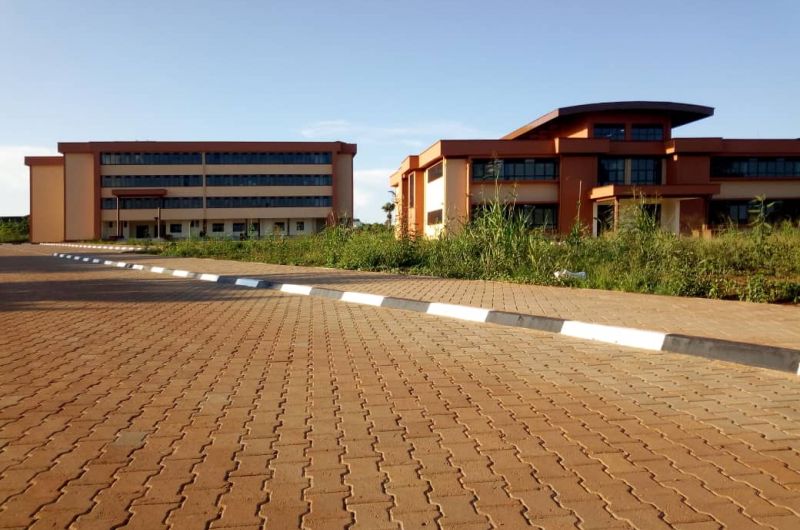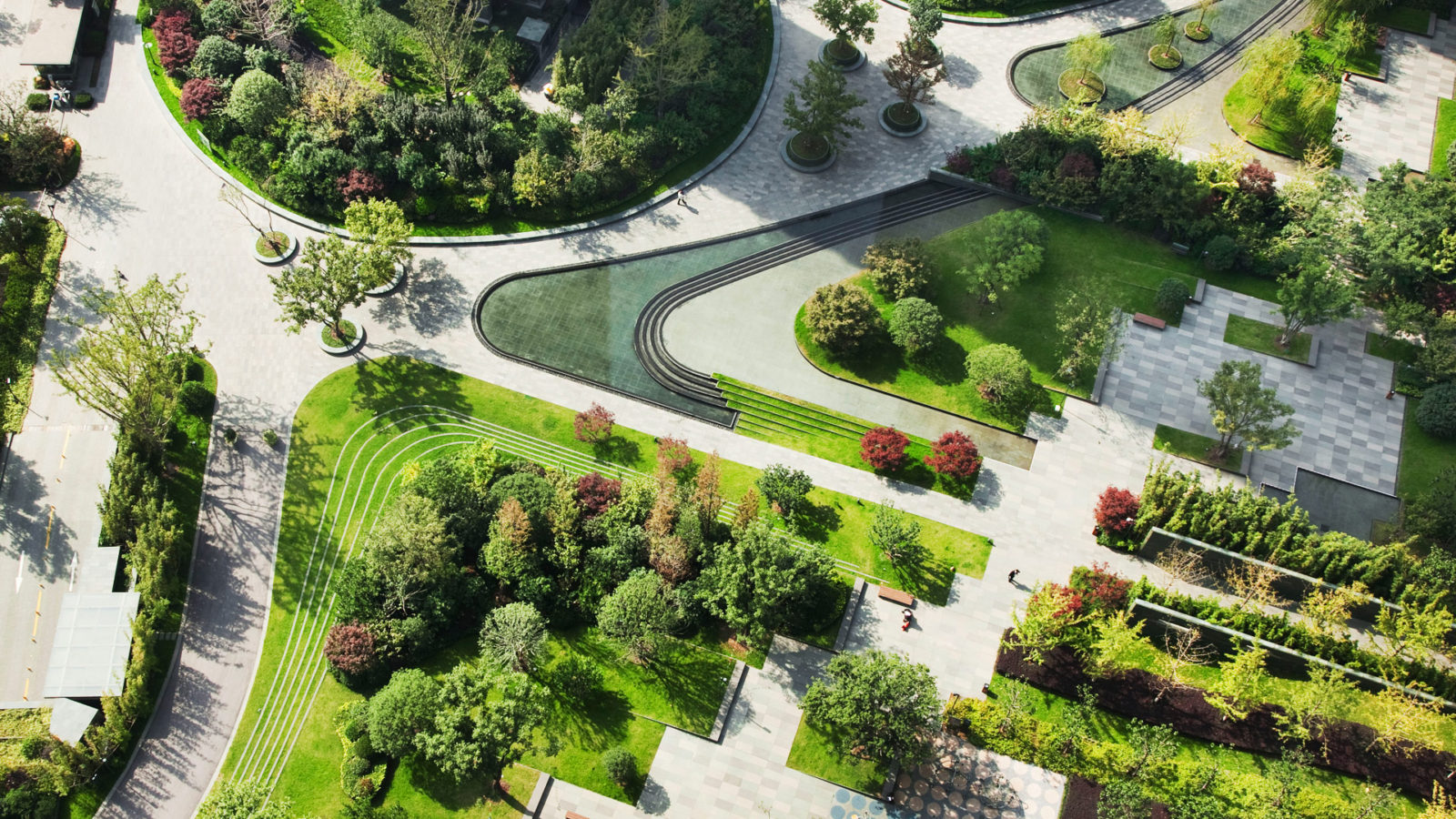
I am a

student

institution

career professional
I need help with
Career Selection & Planning
Find your best-fit career, stream, course or college through advanced assessments and expert guidance.
college applications
Get admits from your dream colleges through end-to-end applications guidance for overseas and liberal arts universities.
I am interested in
Career Development Programs
State-of-the-art career assessments, expert guidance, and more to help students plan their career paths.
Career Advancement Programs
Expert-led MUN training programs, inspirational career talks and more to help students get that added edge.
I am interested in
Getting Certified (ICCC)
Become an International Certified Career Coach through a multi-level credentialing program by Mindler & CDA (USA).
Partnering with Mindler
Expand and grow your career counselling practice by leveraging the full force of Mindler’s career guidance platform.
Ready to discover your perfect career?
Enter your email id to take the Orientation Style test for free.
CAREER COUNSELLING PROGRAMS
Class 8-9
Stream & Subject SelectionAdvanced assessment & personalised guidance to help you select the perfect stream and subjects that align you to the right careers.
Class 10-12
Career Selection & PlanningExpert guidance & 5-dimensional assessment to help you discover your perfect career and choose the right course and college.
Graduates
Career Selection & Development5-dimensional assessment & superior guidance to help you discover your perfect career and choose the best next step.
Thank you for contacting us!
One of our team members will respond in 2 working days to resolve your query. If your query is urgent, you can alternatively call our career helpline.
Ready to pave your way to your dream college?
Leave your details below and we will get in touch shortly.
COLLEGE APPLICATION PROGRAMS
Overseas Application
End-to-end overseas admissions guidance to help you build the perfect applications for your target universities.
Liberal Arts Application
Comprehensive guidance and personalised application development for admissions to Liberal Arts programs.
Thank you for contacting us!
One of our team members will respond in 2 working days to resolve your query. If your query is urgent, you can alternatively call our career helpline.
Ready to give students the best of career guidance?
Leave your details below and we will get in touch shortly.
Career Development Programs
Career Development &
Planning Ecosystem
State-of-the-art assessment & end-to-end career guidance to help students discover their perfect career.
Thank you for contacting us!
One of our team members will respond in 2 working days to resolve your query. If your query is urgent, you can alternatively call our career helpline.
Ready to give your students the added edge?
Leave your details below and we will get in touch shortly.
Career Advancement Programs
MUN Training Program
Expert-led training and comprehensive guidance sessions to help students excel at MUN conferences.
Mindler Talks
Career awareness and inspirational talks for students with professionals who have achieved success in their fields.
Thank you for contacting us!
One of our team members will respond in 2 working days to resolve your query. If your query is urgent, you can alternatively call our career helpline.
Ready to upgrade your career counselling skills?
Enter your email id to start your ICCC application.
Getting Certified (ICCC)
International Certified
Career Coach (ICCC)
A 3-month program with emphasis on global practices, experiential learning & career guidance tools.
Thank you for contacting us!
One of our team members will respond in 2 working days to resolve your query. If your query is urgent, you can alternatively call our career helpline.
Ready to grow as a counsellor?
Leave your details below and we will get in touch shortly.
Partnering with Mindler
Mindler Partner Program
World-class career assessment platform & tools to help you scale up your career counselling practice.
Thank you for contacting us!
One of our team members will respond in 2 working days to resolve your query. If your query is urgent, you can alternatively call our career helpline.
Breaking News
- Flexible Remote Work Opportunity for University Students: Earn $100–$250 Per Month ...Read More
- Ministry of Education and Sports Azerbaijan Government Scholarships For 2025-2026 Academic Year ...Read More
- Government Sponsorship Undergraduate Admission Lists 2025-26 for Makerere University ...Read More
- Ministry of Education And Sports: Egyptian Government Scholarships 2025-2026 Academic Year ...Read More
- Ground Breaker Full Scholarship for girls to study Software Engineering 2025 July Intake ...Read More
- Tony Elumelu Foundation Entrepreneurship Programme (TEEP) 2025 for young African Entrepreneurs ...Read More
- DESIGNING FUTURES 2050 International Design Competition 2025 (€15,000 prize) ...Read More
- Ground Breaker Full time Scholarship for girls to study Software Engineering 2025 Intake ...Read More
- Ministry of Education And Sports Algerian Vocational Training Scholarships for 2024-2025 AY ...Read More
- Ministry of Education and Sports Advert for the Algerian Government Scholarships for 2024-2025 ...Read More
Landscape Architect
Plan and design land areas for projects such as parks and other recreational facilities, airports, highways, hospitals, schools, land subdivisions, and commercial, industrial, and residential sit
Add to FavouritesPlan and design land areas for projects such as parks and other recreational facilities, airports, highways, hospitals, schools, land subdivisions, and commercial, industrial, and residential sites
Daiy Actives / Routin Tasks
1. Confer with clients, engineers, and building architects to understand a project
2. Prepare site plans, specifications, and cost estimates
3. Coordinate the arrangement of existing and proposed land features and structures
4. Prepare graphic representations of proposed plans using computer-aided design and drafting (CADD) software
5. Select appropriate materials for use in landscape designs
6. Analyze environmental reports on land conditions, such as drainage and energy usage
7. Inspect landscape work to ensure that it adheres to original plans
8. Seek new work through marketing or by giving presentations
People enjoy attractively designed gardens, public parks, playgrounds, residential areas, college campuses, and public spaces. Landscape architects design these areas so that they are not only functional but also beautiful and harmonious with the natural environment. Landscape architects also plan the locations of buildings, roads, walkways, flowers, shrubs, and trees within these environments.
Landscape architects use several different technologies in their work. For example, through the use of computer-aided design and drafting (CADD) software, landscape architects prepare models of their proposed work. They then present these models to clients for feedback to demonstrate the final look of the project. Many landscape architects also use geographic information systems (GIS), which allow them to present data visually as maps, reports, and charts.
Landscape architects undertake projects that seek to enhance the natural beauty of a space and provide environmental benefits. They may plan the restoration of natural places disturbed by humans, such as wetlands, streams, and mined areas. They may also design "green roofs" or rooftop gardens that can retain storm water, absorb air pollution, and cool buildings while also providing pleasant scenery. Managing storm water runoff is another important part of many landscape architectural plans because it protects clean water sources and natural ecosystems from pollutants. Landscape architects also play a role in preserving and restoring historic landscapes.
Landscape architects who work for government agencies design sites and landscapes for government buildings, parks, and other public lands, as well as plan for landscapes and recreation areas in national parks and forests. In addition, they prepare environmental impact assessments based on proposed construction.
Important Qualities
Analytical skills. Landscape architects need to understand the content of designs. When designing a building's drainage system, for example, landscape architects need to understand how the building's location and surrounding land affect each other.
Communication skills. Landscape architects share their ideas, both orally and in writing, with clients, other architects, and workers who help prepare drawings. Many landscape architects also give presentations to explain their designs.
Creativity. Landscape architects create the overall look of gardens, parks, and other outdoor areas. Designs should be both pleasing to the eye and functional.
Problem-solving skills. When designing outdoor spaces, landscape architects must be able to provide solutions to unanticipated challenges. These solutions often involve looking at the challenge from many perspectives.
Technical skills. Landscape architects use computer-aided design and drafting (CADD) programs to create representations of their projects. Some also must use geographic information systems (GIS) for their designs.
Visualization skills. Landscape architects must be able to imagine how an overall outdoor space will look once complete.
-
 Ministry of Education And Sports: Egyptian Government Scholarships 2025-2026 Academic Year
Full Scholarship
Ministry of Education And Sports: Egyptian Government Scholarships 2025-2026 Academic Year
Full Scholarship
Know more -
 Priscilla Namwenje, A Ugandan Architect wins LafargeHolcim Next Generation Top Prize
Connective Infrastructure
Priscilla Namwenje, A Ugandan Architect wins LafargeHolcim Next Generation Top Prize
Connective Infrastructure
Know more -
TU Delft Summer School Scholarships 2024 for Students (Fully Funded to Delft, Netherlands) Summer School Program for students doing Architecture or Urban Planning
Know more -
 Enabel and PSFU Work Readiness Program for recent graduates from Uganda
Connecting graduates to hundreds of Employers
Enabel and PSFU Work Readiness Program for recent graduates from Uganda
Connecting graduates to hundreds of Employers
Know more -
 Makerere University invites private undergraduate applicants for academic year 2017-2018
Private sponsorship scheme applications for undergraduate are open
Makerere University invites private undergraduate applicants for academic year 2017-2018
Private sponsorship scheme applications for undergraduate are open
Know more
Draw Inspiration from time tested individuals
-
 The journey of Architecture in Uganda Part 2 Featuring Arch. Mugamba Kabuzi Davy, Arch Kajumba Tom, Arch Nankya Collins Dolores
The journey of Architecture in Uganda Part 2 Featuring Arch. Mugamba Kabuzi Davy, Arch Kajumba Tom, Arch Nankya Collins Dolores
Watch Interview -
 The contentment in living your childhood career dream, Meet Marvin Tumwine
The contentment in living your childhood career dream, Meet Marvin Tumwine
Watch Interview
Careers that are in the same career field as Landscape Architect
-
 Architect
Know more
Architect
Know more -
 Civil Engineer
Know more
Civil Engineer
Know more -
 Interior Designer
Know more
Interior Designer
Know more -
 Landscape Architect
Know more
Landscape Architect
Know more -
 Surveyor
Know more
Surveyor
Know more -
 Construction manager
Know more
Construction manager
Know more -
 Water engineer
Know more
Water engineer
Know more -
 Site engineer
Know more
Site engineer
Know more -
 Plumber
Know more
Plumber
Know more -
 Carpenter
Know more
Carpenter
Know more -
 Electrician
Know more
Electrician
Know more -
 Welder
Know more
Welder
Know more -
 Construction Manager
Know more
Construction Manager
Know more -
 Cost Estimator
Know more
Cost Estimator
Know more -
 Geodetic Surveyor
Know more
Geodetic Surveyor
Know more -
 Architectural and Civil Drafter
Know more
Architectural and Civil Drafter
Know more -
 Architectural Drafter
Know more
Architectural Drafter
Know more -
Civil Drafter Know more
-
 Civil Engineering Technician
Know more
Civil Engineering Technician
Know more -
 Surveying and Mapping Technician
Know more
Surveying and Mapping Technician
Know more -
 Surveying Technician
Know more
Surveying Technician
Know more -
 Mapping Technician
Know more
Mapping Technician
Know more -
 Pest Control Worker
Know more
Pest Control Worker
Know more -
 Tree Trimmer and Pruner
Know more
Tree Trimmer and Pruner
Know more -
 First-Line Supervisors of Construction Trades and Extraction Worker
Know more
First-Line Supervisors of Construction Trades and Extraction Worker
Know more -
 Solar Energy Installation Manager
Know more
Solar Energy Installation Manager
Know more -
 Boilermaker
Know more
Boilermaker
Know more -
 Brickmason and Blockmason (Builder)
Know more
Brickmason and Blockmason (Builder)
Know more -
 Stone Mason (Builder)
Know more
Stone Mason (Builder)
Know more -
 Construction Carpenter
Know more
Construction Carpenter
Know more -
 Rough Carpenter
Know more
Rough Carpenter
Know more -
 Carpet Installer
Know more
Carpet Installer
Know more -
 Floor Layer, Except Carpet, Wood, and Hard Tiles
Know more
Floor Layer, Except Carpet, Wood, and Hard Tiles
Know more -
 Floor Sander and Finisher
Know more
Floor Sander and Finisher
Know more -
 Tile and Marble Setter
Know more
Tile and Marble Setter
Know more -
 Cement Masons and Concrete Finisher
Know more
Cement Masons and Concrete Finisher
Know more -
 Terrazzo Worker and Finisher
Know more
Terrazzo Worker and Finisher
Know more -
 Construction Laborer
Know more
Construction Laborer
Know more -
 Paving, Surfacing, and Tamping Equipment Operator
Know more
Paving, Surfacing, and Tamping Equipment Operator
Know more -
 Pile-Driver Operator
Know more
Pile-Driver Operator
Know more -
 Operating Engineers and Other Construction Equipment Operator
Know more
Operating Engineers and Other Construction Equipment Operator
Know more -
 Drywall and Ceiling Tile Installer
Know more
Drywall and Ceiling Tile Installer
Know more -
 Taper
Know more
Taper
Know more -
 Glazier
Know more
Glazier
Know more -
 Insulation Worker, Floor, Ceiling, and Wall
Know more
Insulation Worker, Floor, Ceiling, and Wall
Know more -
 Insulation Worker, Mechanical
Know more
Insulation Worker, Mechanical
Know more -
 Painter, Construction and Maintenance
Know more
Painter, Construction and Maintenance
Know more -
 Paperhanger
Know more
Paperhanger
Know more -
 Pipelayer
Know more
Pipelayer
Know more -
 Plumber, Pipefitter, and Steamfitter
Know more
Plumber, Pipefitter, and Steamfitter
Know more -
 Pipe Fitter and Steamfitter
Know more
Pipe Fitter and Steamfitter
Know more -
 Plasterer and Stucco Mason
Know more
Plasterer and Stucco Mason
Know more -
 Reinforcing Iron and Rebar Worker
Know more
Reinforcing Iron and Rebar Worker
Know more -
 Roofer
Know more
Roofer
Know more -
 Sheet Metal Worker
Know more
Sheet Metal Worker
Know more -
 Structural Iron and Steel Worker
Know more
Structural Iron and Steel Worker
Know more -
 Solar Photovoltaic Installer
Know more
Solar Photovoltaic Installer
Know more -
 Helpers--Brickmasons, Blockmasons, Stonemasons, and Tile and Marble Setter
Know more
Helpers--Brickmasons, Blockmasons, Stonemasons, and Tile and Marble Setter
Know more -
 Helpers--Carpenter
Know more
Helpers--Carpenter
Know more -
 Helpers--Electrician
Know more
Helpers--Electrician
Know more -
 Helpers--Painters, Paperhangers, Plasterers, and Stucco Mason
Know more
Helpers--Painters, Paperhangers, Plasterers, and Stucco Mason
Know more -
 Helpers-Pipelayers, Plumbers, Pipefitters, and Steamfitter
Know more
Helpers-Pipelayers, Plumbers, Pipefitters, and Steamfitter
Know more -
 Helpers--Roofer
Know more
Helpers--Roofer
Know more -
 Construction and Building Inspector
Know more
Construction and Building Inspector
Know more -
 Elevator Installer and Repairer
Know more
Elevator Installer and Repairer
Know more -
 Hazardous Materials Removal Worker
Know more
Hazardous Materials Removal Worker
Know more -
 Rail-Track Laying and Maintenance Equipment Operator
Know more
Rail-Track Laying and Maintenance Equipment Operator
Know more -
 Septic Tank Servicer and Sewer Pipe Cleaner
Know more
Septic Tank Servicer and Sewer Pipe Cleaner
Know more -
 Segmental Paver
Know more
Segmental Paver
Know more -
 Solar Thermal Installer and Technician
Know more
Solar Thermal Installer and Technician
Know more -
 Weatherization Installers and Technician
Know more
Weatherization Installers and Technician
Know more -
 Derrick Operator, Oil and Gas
Know more
Derrick Operator, Oil and Gas
Know more -
 Rotary Drill Operator, Oil and Gas
Know more
Rotary Drill Operator, Oil and Gas
Know more -
 Service Unit Operator, Oil, Gas, and Mining
Know more
Service Unit Operator, Oil, Gas, and Mining
Know more -
 Earth Driller, Except Oil and Gas
Know more
Earth Driller, Except Oil and Gas
Know more -
 Explosives Worker, Ordnance Handling Expert, and Blaster
Know more
Explosives Worker, Ordnance Handling Expert, and Blaster
Know more -
 Continuous Mining Machine Operator
Know more
Continuous Mining Machine Operator
Know more -
 Mine Cutting and Channeling Machine Operator
Know more
Mine Cutting and Channeling Machine Operator
Know more -
 Rock Splitter, Quarry
Know more
Rock Splitter, Quarry
Know more -
 Roof Bolter, Mining
Know more
Roof Bolter, Mining
Know more -
 Roustabout, Oil and Gas
Know more
Roustabout, Oil and Gas
Know more -
 Helpers--Extraction Worker
Know more
Helpers--Extraction Worker
Know more -
 Tire Repairers and Changer
Know more
Tire Repairers and Changer
Know more -
 Mechanical Door Repairer
Know more
Mechanical Door Repairer
Know more -
 Control and Valve Installers and Repairers, Except Mechanical Door
Know more
Control and Valve Installers and Repairers, Except Mechanical Door
Know more -
 Heating, Air Conditioning, and Refrigeration Mechanics and Installer
Know more
Heating, Air Conditioning, and Refrigeration Mechanics and Installer
Know more -
 Heating and Air Conditioning Mechanics and Installer
Know more
Heating and Air Conditioning Mechanics and Installer
Know more -
 Maintenance Workers, Machinery
Know more
Maintenance Workers, Machinery
Know more -
 Millwright
Know more
Millwright
Know more -
 Refractory Materials Repairers, Except Brickmason
Know more
Refractory Materials Repairers, Except Brickmason
Know more -
 Coin, Vending, and Amusement Machine Servicer and Repairer
Know more
Coin, Vending, and Amusement Machine Servicer and Repairer
Know more -
 Locksmith and Safe Repairer
Know more
Locksmith and Safe Repairer
Know more -
 Manufactured Building and Mobile Home Installer
Know more
Manufactured Building and Mobile Home Installer
Know more -
 Signal and Track Switch Repairer
Know more
Signal and Track Switch Repairer
Know more -
 Engine and Other Machine Assembler
Know more
Engine and Other Machine Assembler
Know more -
 Power Plant Operator
Know more
Power Plant Operator
Know more -
 Conveyor Operator and Tender
Know more
Conveyor Operator and Tender
Know more -
 Crane and Tower Operator
Know more
Crane and Tower Operator
Know more -
 Dredge Operator
Know more
Dredge Operator
Know more -
 Excavating and Loading Machine and Dragline Operator
Know more
Excavating and Loading Machine and Dragline Operator
Know more -
 Loading Machine Operator, Underground Mining
Know more
Loading Machine Operator, Underground Mining
Know more -
 Security and Fire Alarm Systems Installer
Know more
Security and Fire Alarm Systems Installer
Know more
Online Training in Architecture and Construction
Trending Opportunities
Latest Jobs Corner
-
6 Data Collection Jobs – Field Researchers – L-IFT
Posted: Posted Sat, 13 Dec 2025 05:31:25 +0000 -
Call Centre Quality Assesor (Fresher Customer Service Jobs) – Sun King
Posted: Posted Fri, 12 Dec 2025 14:51:54 +0000 -
Day Auditor / Head Cashier Jobs – Protea Hotel Kampala Skyz
Posted: Posted Fri, 12 Dec 2025 14:51:44 +0000 -
Programme Liaisons Officer Jobs – Ministry of Finance, Planning and Economic Development
Posted: Posted Fri, 12 Dec 2025 14:51:25 +0000 -
2 Sub-Programme Officer – Change Management and Quality Assurance Jobs – Ministry of Finance, Planning and Economic Development
Posted: Posted Fri, 12 Dec 2025 14:51:16 +0000 -
Programme Officer – Change Management and Quality Assurance Jobs – Ministry of Finance, Planning and Economic Development
Posted: Posted Fri, 12 Dec 2025 14:50:43 +0000 -
Account Relationship Officer – Enterprise Jobs – Roke Telkom
Posted: Posted Fri, 12 Dec 2025 14:50:29 +0000 -
Roving Finance Manager Jobs – Danish Refugee Council (DRC)
Posted: Posted Fri, 12 Dec 2025 14:50:16 +0000 -
2 Programme Officer Jobs – Office of the Prime Minister
Posted: Posted Fri, 12 Dec 2025 14:50:00 +0000 -
Programmes Coordinator Jobs – Office of the Prime Minister
Posted: Posted Fri, 12 Dec 2025 14:49:44 +0000
Advertisement
Trending Opportunities
Advertisement
Popular Careers
-
Civil Engineer
30208 Views -
Actor
24380 Views -
Flight attendant
22383 Views -
Fashion Designer
20645 Views -
Pilot and flight engineer
19283 Views
























